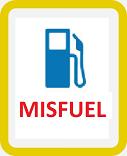Despite having some of industry’s most hazardous working environments, a sector that pioneered the adoption of digital technology has been slow to exploit artificial intelligence and machine learning in the area of health and safety.
It’s no secret – oil and gas industry leaders acknowledge they have been slow to embrace digital technologies. A recent Boston Consulting Group report sums it up well: “The oil and gas industry is not an easy place to go digital.” Digitisation brings with it the promise of improved safety and efficiency, yet many companies still have a long way to go. It may be surprising to learn that some businesses even lack the technology to locate their workers ‒ which has clear and potentially dire implications for emergency situations.
This is partly because most of the industry is still deeply rooted in 20th-century methodologies, systems and processes. A report by McKinsey & Company notes that oil and gas companies were actually pioneers in the first digital age of the 1980s and 1990s, making use of 3D seismic imaging to model refineries and advanced process control for operations. But more recently, digital advancements have been limited, occurring in silos. As a whole, the industry is barely digitised end to end, and for the most part relies on legacy technologies. Full digitalisation has proved elusive, but that is beginning to change.
Thirty years ago, ‘connectivity’ meant expensive satellites linking up remote locations. Now, coverage is both pervasive and cheaper thanks to mobile networks. With 5G, private cellular networks will soon be an option for oil rigs and fields in remote locations. What’s more, there are fully interoperable IP communication devices, compared to 20 years ago when such devices were proprietary and lacked the protocols to connect seamlessly to different devices. This has given oil and gas companies a new lease of life and the keys to an AI-based future.
Energy companies generate a huge amount of data, and yet historically have only used a small proportion. Thanks to artificial intelligence and advanced wireless networks – and soon 5G – data can be computed and analysed locally, at low cost and with no lag time. This translates into real-world advancements that can lead to better health, safety and security for a crew using smart sensors, poisonous fume detectors, IP cameras and vibration sensors, to name a few.
For example, wearable sensors can provide real-time monitoring to pinpoint workers who might be at risk and can alert the rest of the crew. IoT-connected wearables such as safety jackets and helmets are already being used by some oil and gas companies for the detection of hazardous gas.
AI, machine learning and robotics can also reduce health and safety risks by carrying out remote-maintenance operations, reducing or even negating the need for physical inspections. By deploying a fleet of digital agents, oil and gas companies can not only react faster when equipment fails, but also prevent failures from occurring in the first place.
Data modelling, which uses AI and neural networking to interpret vast quantities of sensor data, can reveal the exact impact of explosions and leakages. Many more companies could be using such analytics to assess the effectiveness of health and safety drills, predict malfunctions and increase efficiency within workflows. For enterprises with ambitious sustainability targets, AI, ML and related technologies will become increasingly important tools to achieve these efficiencies.
The benefits are easy to see, but digitisation brings with it challenges, too. Among these, algorithm design is perhaps the trickiest. To reap the benefits of technology advancement, oil and gas companies need to learn to trust AI while at the same time retaining accountability for any actions arising from its use or misuse. Algorithmic design needs to take into account how AI interacts with the people around it. It’s a modern twist on an age-old conundrum. Human factors are notoriously hard to account for, yet if anything goes wrong in an AI-driven world, blaming the algorithm won’t pass muster with regulators and political leaders.
Challenges also exist in the form of legacy technology and traditional mindsets. Forecasts suggest significant oil and gas production will continue through at least 2050. But the way the industry operates, its processes, technologies and workflows will change dramatically in the coming decades. Oil and gas executives must embrace the new digital dawn today to prepare their companies for radically different future.
Creating a multi-stage digitisation roadmap is a great start. Any such initiative needs to have clear outcomes in mind, a realistic assessment of potential return on investment and a plan for harmonising engineering systems from a health and safety perspective. This can be especially challenging in large siloed divisions and companies. Yet it is within these complex ecosystems that advanced analytics, AI and ML can have the most impact ‒ delivering improved health and safety, more sustainable operations and reduced costs. The key is to start planning now for a sustainable future that will arrive sooner than you think – as it has in most other industries.
Charlotte Brown is sector director for energy at consulting firm Tessella. Didier Pagnoux is director of Altran’s World Class Center for IoT Solutions.
E&T



















